The Budapest Museum of Fine Arts (Szépművészeti Múzeum) is a cultural gem located in the iconic Heroes’ Square in the heart of the Hungarian capital. Founded in the early 20th century, this museum houses an extensive collection of more than 100,000 works spanning a broad spectrum of time, from Ancient Egyptian artefacts and classical sculptures to European paintings up to the 20th century. Thanks to the diversity and quality of its collection, it has established itself as one of the most important museums in Central Europe. The neoclassical building stands out both for its façade and its spacious interior rooms, which offer a quiet and well-organised environment in which to enjoy art in peace and quiet. Over the years, the museum has been able to adapt to the times, renovating its spaces and expanding its exhibition offer with temporary exhibitions that complement its permanent collection. Whether for academic interest, cultural curiosity or simple aesthetic enjoyment, a visit to the Museum of Fine Arts is a recommendable experience for those who wish to learn more about Europe’s artistic heritage from an accessible and well-cared-for perspective.
History and Foundation
The Budapest Museum of Fine Arts was born out of Hungary’s desire to establish itself as a cultural power within the Austro-Hungarian Empire at the end of the 19th century. A crucial step was the purchase of the Esterházy collection in 1871, which included works by artists such as Raphael, Titian and Poussin, thus laying the foundations for a future museum institution. In the context of the Millennium celebrations of 1896, commemorating a thousand years since the arrival of the Magyars in the Carpathian Basin, the Hungarian Parliament passed a law that earmarked funds for important cultural projects, including the construction of the museum. The building, designed by Albert Schickedanz and Fülöp Herzog, began construction on Heroes’ Square in 1900 and was officially inaugurated on 1 December 1906 by Emperor Franz Joseph I, opening its doors to the public a few days later.
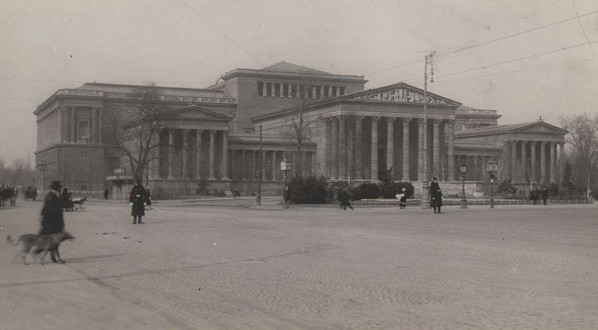
During the first decades of the 20th century, the museum expanded its collection with notable acquisitions and donations, such as that of Count János Pálffy. However, war interrupted its development. The First World War limited its expansion for economic reasons, but it was during the Second World War that the museum suffered its greatest damage. The building was bombed, the glass roof collapsed and many works had to be moved urgently to the west of the country. Although most returned between 1946 and 1947, some pieces were irreparably damaged and others were lost and recorded as war losses.
After the conflict, the museum was rebuilt and reopened in 1949, regaining its role as a cultural institution. In 1957, the Hungarian art collection was separated and moved to the National Gallery in Buda Castle, reflecting a cultural reorganisation under the communist regime. Decades later, in 2012, the two collections were unified again as part of a project to restore the museum to its original character. This process culminated in a major renovation in 2018, which modernised the facilities, improved conservation conditions and allowed for the reopening of the Romanesque Room, closed for more than 70 years due to war damage.
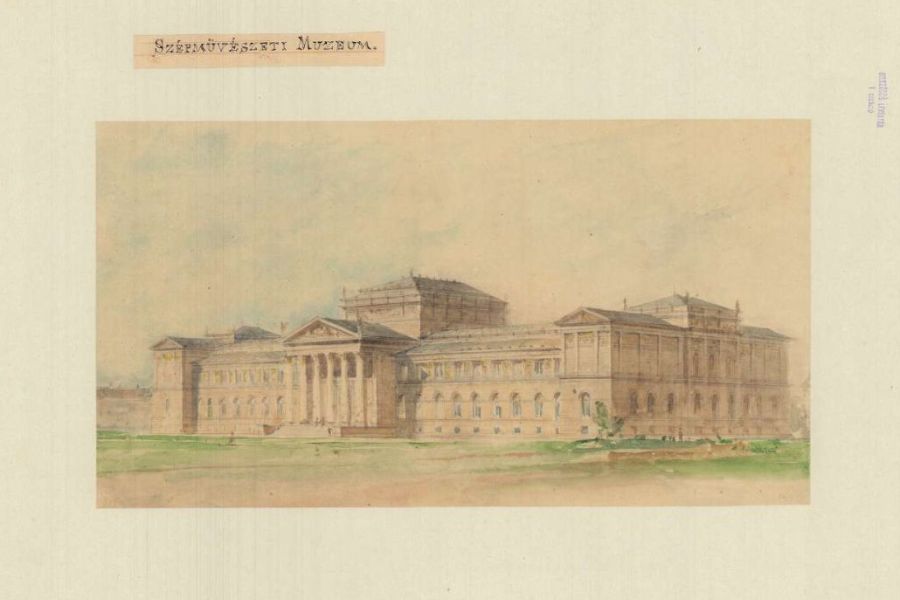
Today, the Budapest Museum of Fine Arts not only preserves one of the most valuable collections in Central Europe, but also represents Hungary’s continued effort to protect and disseminate its cultural heritage. Its location opposite the Műcsarnok in the iconic Heroes’ Square and its neoclassical architecture make it not only a visual landmark of the city, but also a symbol of resistance, renewal and commitment to art history. With each new generation of visitors, the museum continues to fulfil its original mission: to provide access to universal art while keeping the country’s cultural memory alive.
Exhibitions
Permanent Exhibitions
Egyptian Collection
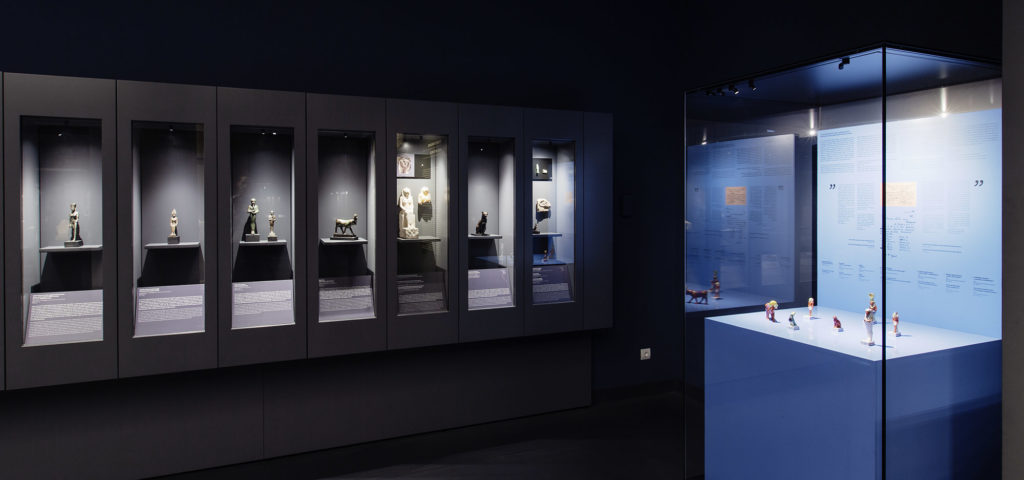
With more than 4,000 pieces, this collection is the second largest in Central Europe and one of the museum’s highlights. It includes painted sarcophagi, mummies, statues and ritual objects from the Predynastic period to the Roman era. Many of these items were acquired by the Hungarian Egyptologist Eduard Mahler in the 1930s, with later additions from excavations in Egypt. The exhibition is organised into three thematic units: ‘Temples – Gods’, ‘The Nile Valley – People’ and ‘Tombs – The Dead’, complemented by an interactive ‘Egyptian Chamber of Secrets’ that allows visitors to explore fascinating details of Pharaonic culture.
Classical Antiques

This collection presents more than 5,000 works from ancient Greece and Rome, including marble sculptures, ceramics, bronzes and jewellery. Acquired in part from the collection of Paul Arndt, a Munich classicist, the exhibition offers an insight into the aesthetics and everyday life of these civilisations. An emblematic piece is the ‘Ballerina of Budapest’, a marble statue from the 3rd century that captures the movement and grace of classical dance. The collection also includes Roman mosaics and Greek vessels with intricate narrative designs.
European Art 1250-1600
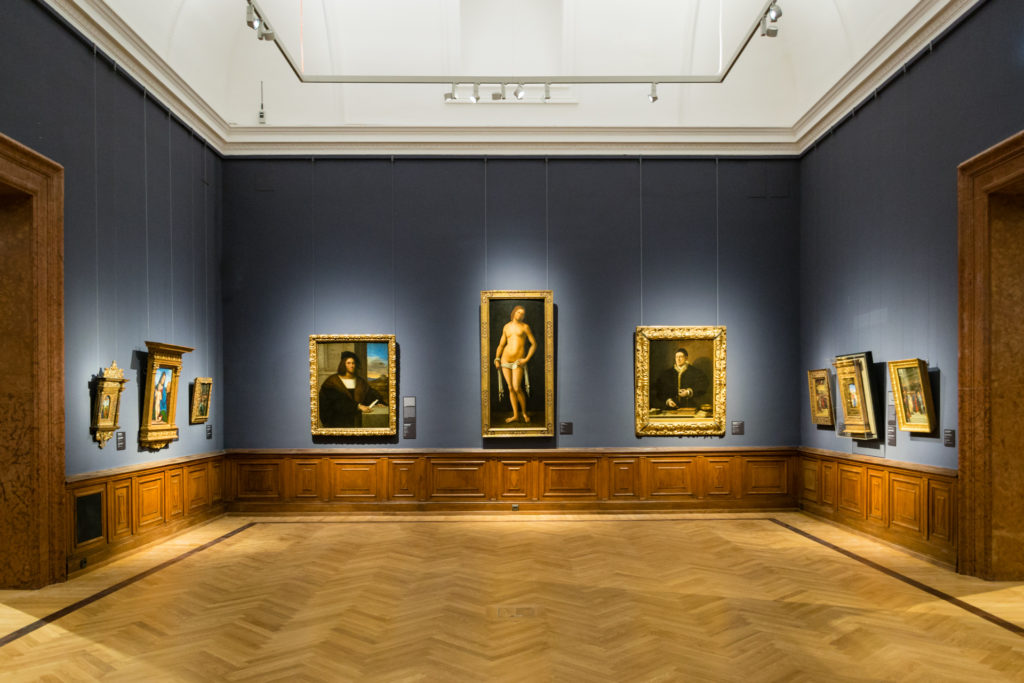
The Gallery of Ancient Paintings is the heart of the museum, with some 3,000 works ranging from Gothic to Renaissance. This collection is especially known for its exceptional collection of Spanish paintings, which includes the largest El Greco collection outside Spain. Highlights include Raphael’s ‘The Virgin Esterházy’, a delicate depiction of the Virgin Mary, and El Greco’s ‘The Penitent Magdalene’, which displays his characteristic expressive style. Paintings by Dürer, Bruegel, Titian and Bronzino are also on display, offering an encyclopaedic view of the Italian, Flemish, Dutch and German schools.
European Sculpture 1350-1800
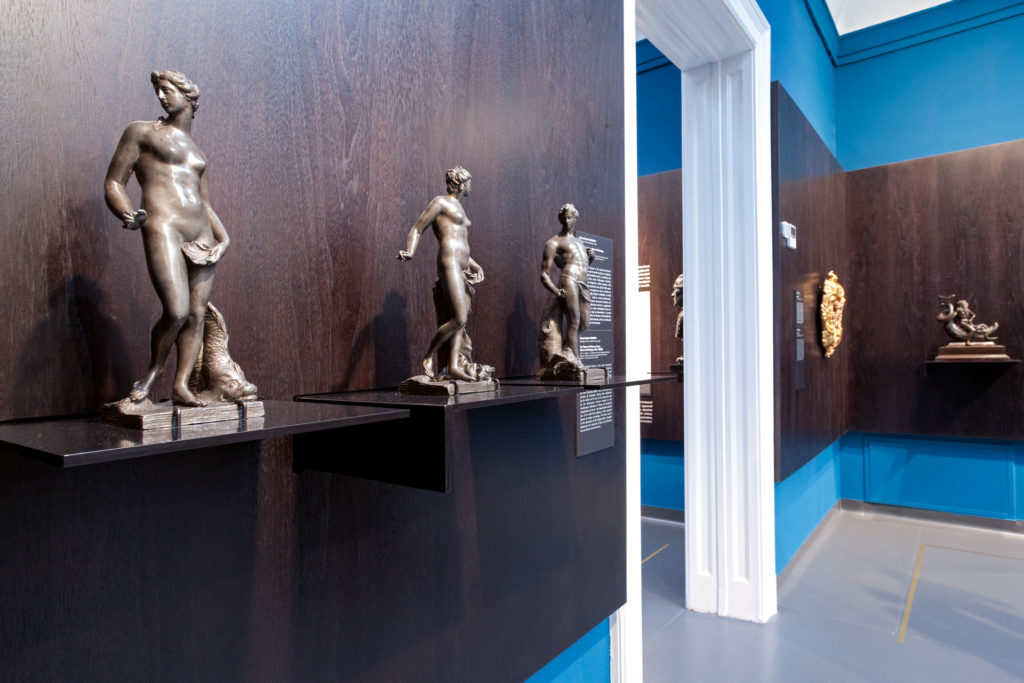
This collection traces the history of European sculpture from the Middle Ages to the 18th century, with some 600 pieces including Renaissance and Baroque works. Among the artists represented are Sansovino, known for his elegant Venetian sculptures, Riemenschneider, master of late German Gothic, and Messerschmidt, whose ‘character heads’ express extreme emotions. The exhibition also includes casts of classical sculptures, which give an insight into the influence of antiquity on later European art.
Art in Hungary 1600-1800
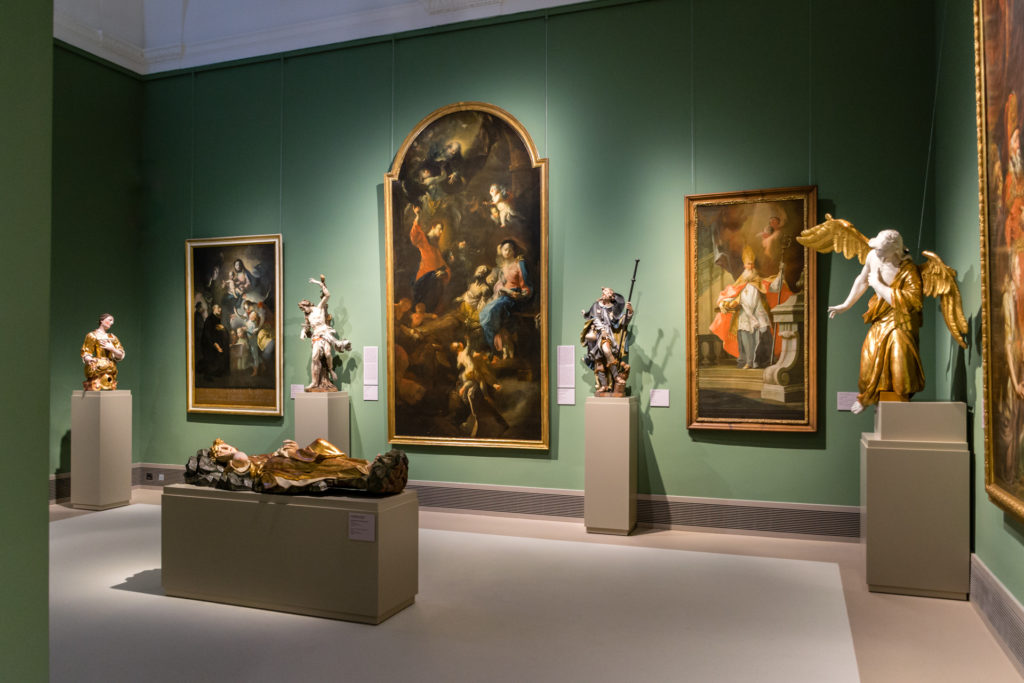
Focusing on Hungarian art of the Baroque period, this collection includes paintings, sculptures and architectural elements commissioned in Hungary or by Hungarian patrons abroad. Artists such as Bogdány Jakab, known for his still lifes, Mányoki Ádam, a portraitist of the nobility, and Stranover Tóbiás, who specialised in genre scenes, are prominent in this section. The exhibition, reinstated in the museum after the 2018 renovation, reflects the cultural richness of Hungary during the period of Austro-Hungarian influence.
Graphic Collection

The Graphic Collection, with some 9,000 drawings and 100,000 prints, spans from the 14th century to the present day, although permanent exhibitions focus on works before 1800 due to the sharing of collections with the Hungarian National Gallery. It includes works by masters such as Dürer, Rembrandt and Leonardo da Vinci, offering an intimate insight into their creative processes. Due to the fragility of these pieces, the exhibition is often rotated, but always features outstanding examples of Renaissance and Baroque prints and sketches.
Exposiciones Temporales
The Museum of Fine Arts is renowned for its high-calibre temporary exhibitions, which often feature works borrowed from international collections or explore specific themes. In April 2025, the current temporary exhibitions are:
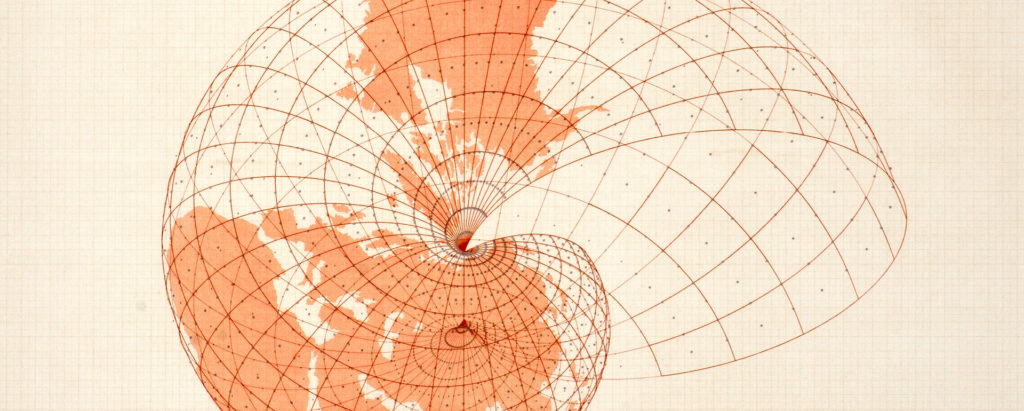
- Munkácsy – History of a World Sensation (27 November 2024 – 21 April 2025): Celebrates the life and work of Mihály Munkácsy, one of the most influential Hungarian painters of the 19th century, with a selection of his most iconic works.
- Systems of Logic / Logic of Systems: The Art and Mind of Agnes Denes (12 December 2024 – 1 June 2025): Explore the conceptual work of Agnes Denes, a pioneer of environmental and logical art, with installations and drawings that reflect on science and society.
- Master MS and his Epoch (9 April 2025 – 20 July 2025): Dedicated to Hungarian medieval art, this exhibition highlights the work of Master MS, a Gothic painter, and his cultural context.
Among the planned temporary exhibitions, highlights include:
- The Marriage of Heaven and Hell (mid-September 2025 – mid-January 2026): An exhibition on the visionary poet and painter William Blake, exploring his life, work and the England of his time.
- Guardians of Eternity (late November 2025 – 31 May 2026): Will feature the terracotta army of the first Chinese emperor, along with bronze ceremonial vessels and funerary ceramics, offering an insight into beliefs about the afterlife in ancient China.
These temporary exhibitions complement the permanent collections, attracting a diverse audience and reinforcing the museum’s reputation as a world-renowned cultural centre.
Architecture: A Stage for Art
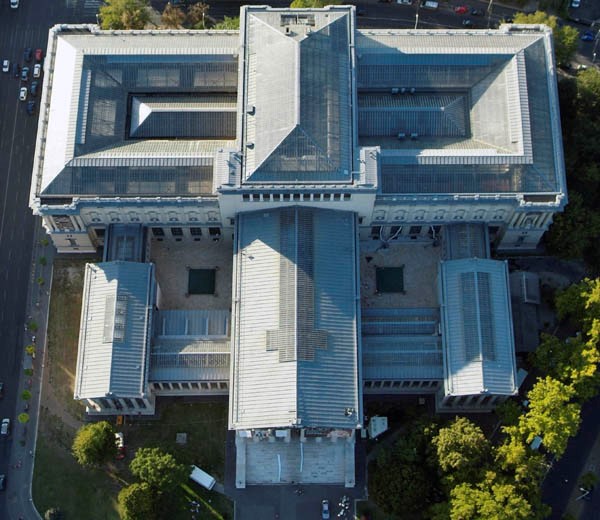
One of the most fascinating aspects of the Budapest Museum of Fine Arts is that it not only houses masterpieces, but is itself a work of art. This idea is developed through the permanent exhibition ‘Architecture: A Stage for Art’, which invites visitors to look beyond the paintings and sculptures and to contemplate the building itself as a major player in the aesthetic experience.
The museum was inaugurated in 1906 as part of Hungary’s ambitious millennium urban planning project. The architects Albert Schickedanz and Fülöp Herzog designed the building in an eclectic, historicist style, with references to the great classical temples and European museums such as the Louvre. Its neoclassical façade, with Corinthian columns and a pediment decorated with allegorical bas-reliefs, gives the building a solemn and timeless presence. From the outset, the architecture sets the tone: the art here is not in a neutral container, but in a space that enhances it.
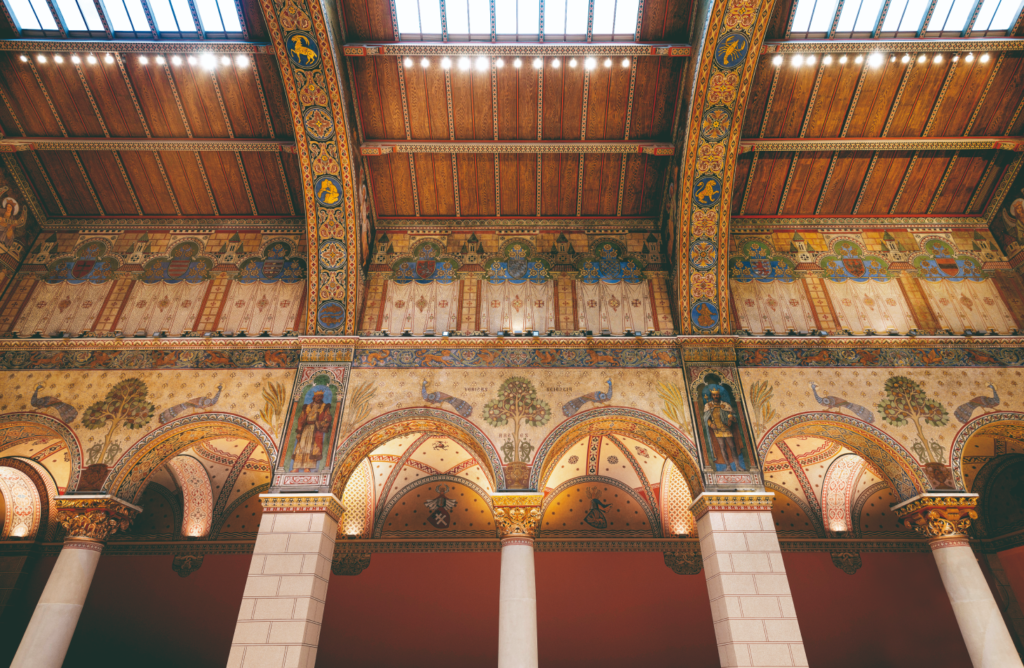
Inside, this logic continues. Each wing of the museum is designed to dialogue with the artistic period it exhibits. The Renaissance Room, for example, is a scale recreation of the interior of the Basilica of San Lorenzo in Florence, attributed to Brunelleschi. When you walk through it, you not only see Renaissance paintings, but you literally walk through architecture that harks back to the same period. The same is true of the Romanesque Room or the Gothic Room, which reproduce spaces inspired by medieval churches, with columns, capitals, semicircular arches or ribbed vaults that immerse the visitor in the spirit of each period.
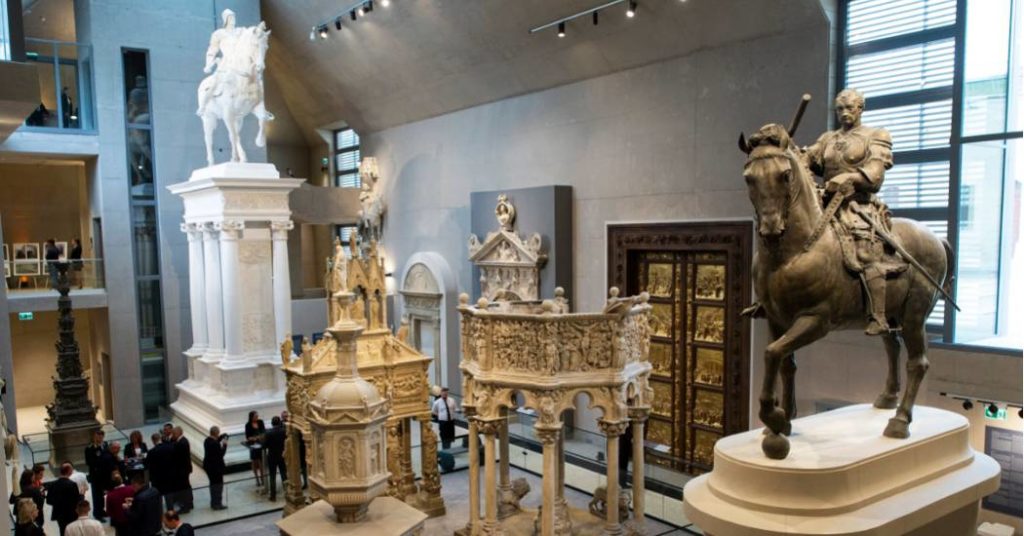
This architectural dimension of the museum was further enhanced following the major restoration carried out between 2015 and 2018, during which numerous original structures were restored and the facilities were modernised. Rooms that had been closed for decades were reopened and advanced technology was implemented for the conservation of the works, without losing the historical character of the building.
Practical Information
- Location: Dózsa György út 41, 1146 Budapest, at Heroes’ Square.
- Opening Hours: Tuesday to Sunday, from 10:00 to 18:00 (last entry at 17:00). Closed on Mondays. On the second Friday of each month, open from 12:00 to 20:00.
How to get there:
- Metro: Line M1 (yellow), Hősök tere station.
- Bus: Lines 20E, 30, 105.
- Tram: Lines 4, 6 (Széchenyi fürdő stop, 10 minutes walk).
- Accessibility: The museum has ramps and elevators, and offers free entry for visitors with disabilities and one companion, with appropriate documentation.
Tickets:
- General: Approximately 12-15 euros (around 4,800-6,000 HUF, depending on the type of exhibition).
- Reduced: 6-8 euros for EU citizens aged 6-26 and 62-70 years old.
- Free: Children under 6 years, seniors over 70 (EU citizens), people with disabilities and one companion, and holders of the Budapest Card for permanent exhibitions.
It is recommended to buy tickets online through the official website to avoid queues.
| Ticket Category | Approximate Price | Notes |
|---|---|---|
| General | 12-15 € (4,800-6,000 HUF) | Varies by exhibition |
| Reduced | 6-8 € | EU citizens 6-26, 62-70 years old |
| Free | 0 € | Under 6, over 70, Budapest Card |
| Audioguide | ~3 € (1,200 HUF) | Available in various languages |
Tips for Visitors
- Plan your visit: The collection is extensive, so it’s helpful to prioritize sections like the ancient paintings or the Egyptian collection. Dedicate at least 2-3 hours for a complete experience.
- Check temporary exhibitions: Special exhibitions are often a major attraction. Review the calendar on the official website before your visit.
- Buy tickets online: Avoid queues by purchasing your tickets in advance, especially during high season.
- Combine with other attractions: Spend a day exploring Heroes’ Square, the Palace of Art, and City Park, where you can visit the Széchenyi Bath or Vajdahunyad Castle.
- Take advantage of the Budapest Card: If you plan to visit several museums, this card offers free entry to permanent exhibitions and discounts at other attractions.
- Bring headphones: Audioguides, available for a small fee, enhance the experience with detailed information.

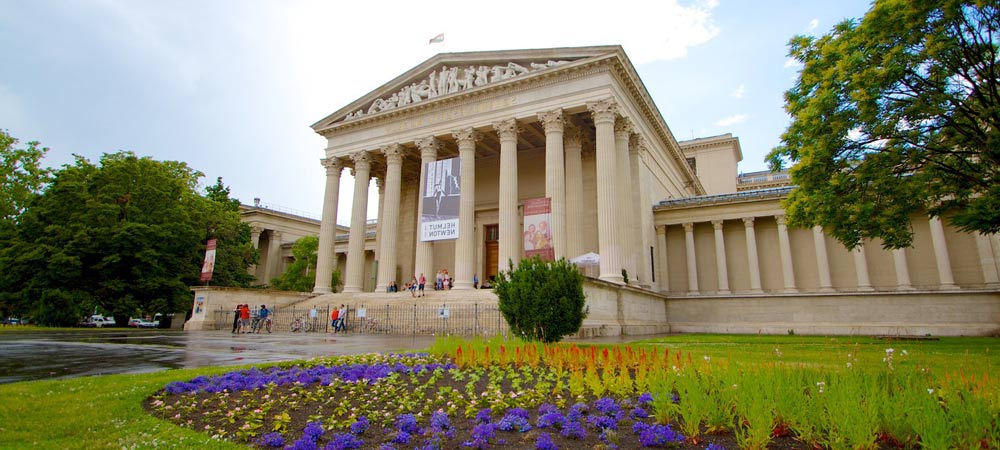
Comments are closed.